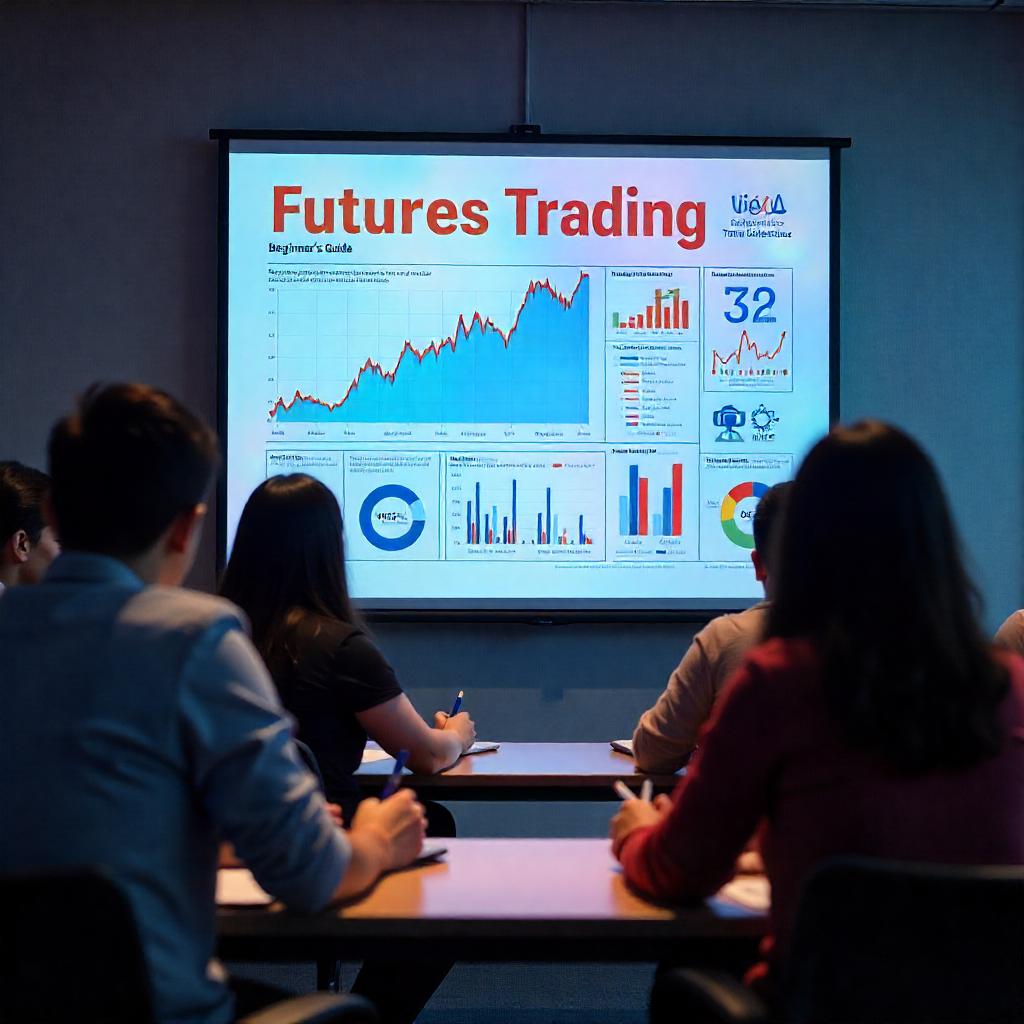Introduction to Futures Trading
Futures trading is a financial practice that allows traders to buy and sell contracts for the future delivery of assets, such as commodities, currencies, or financial instruments. This guide aims to provide a comprehensive overview of futures trading, its mechanics, benefits, risks, and strategies to succeed in this dynamic market.

In recent years, futures trading has gained prominence among both institutional and retail investors. The ability to leverage positions, hedge against risk, and access various markets has made it an attractive option for many. However, understanding the intricacies of futures trading is vital for success.
Keywords: Futures Trading, Financial Markets, Contracts, Commodities
2. How Futures Trading Works
Futures trading involves buying and selling futures contracts, which are legally binding agreements to buy or sell an asset at a predetermined price on a specific date in the future.
2.1 Understanding Futures Contracts
A futures contract specifies the quantity and quality of the underlying asset, the price at which it will be traded, and the delivery date. These contracts are standardized, meaning they are uniform in terms of quantity and quality, making them easily tradable on exchanges.
For example, a standard futures contract for crude oil is 1,000 barrels, while a corn futures contract typically represents 5,000 bushels.
2.2 The Role of Exchanges
Futures contracts are traded on regulated exchanges, such as the Chicago Mercantile Exchange (CME) or the Intercontinental Exchange (ICE). These exchanges provide a transparent marketplace where buyers and sellers can transact without directly interacting with each other.
The role of exchanges includes:
- Standardization: Ensuring that all contracts meet specific criteria, making them easier to trade.
- Clearing: Acting as an intermediary to guarantee that trades are executed and settled.
- Price Discovery: Facilitating the determination of prices based on supply and demand dynamics.

2.3 Margin Trading and Leverage
One of the defining features of futures trading is the use of margin. Traders are required to deposit a fraction of the total contract value, known as the margin. This enables them to control larger positions with less capital.
For instance, if a trader wants to buy a futures contract worth $100,000 and the margin requirement is 10%, they would only need to deposit $10,000. This practice amplifies potential gains but also increases the risk of significant losses.
Data Sources:
- Commodity Futures Trading Commission (CFTC)
- Chicago Mercantile Exchange (CME)
3. Benefits of Futures Trading
Futures trading offers several advantages that make it an attractive option for investors:
3.1 Liquidity
Futures markets are highly liquid, meaning there are many buyers and sellers available at any given time. This liquidity allows traders to enter and exit positions easily without significantly affecting the market price.
3.2 Hedging Against Price Fluctuations
Businesses and investors use futures contracts to hedge against price fluctuations in commodities or financial instruments. For example, a farmer can lock in a price for their corn harvest months in advance, protecting against potential price declines.
3.3 Diversification Opportunities
Futures trading allows investors to diversify their portfolios with various asset classes. By trading futures on commodities, currencies, and stock indices, traders can spread their risk across different markets.
Keywords: Liquidity, Hedging, Diversification
4. Risks Involved in Futures Trading
While futures trading presents numerous opportunities, it also carries significant risks:
4.1 Market Volatility
The prices of futures contracts can fluctuate dramatically, leading to potential losses. Economic events, geopolitical tensions, and supply-demand imbalances can all impact market volatility.
4.2 Leverage Risks
While leverage can amplify gains, it can also magnify losses. A small adverse price movement can lead to significant losses, potentially exceeding the initial investment.
4.3 Complexity and Knowledge Requirements
Futures trading requires a solid understanding of market dynamics, technical analysis, and risk management strategies. New traders may find the learning curve steep and risk losing their capital without proper education.
Data Sources:
- Investopedia: Risks of Futures Trading
- CFTC: Investor Education on Futures Trading

5. Key Strategies for Successful Futures Trading
To navigate the complexities of futures trading, traders can employ various strategies:
5.1 Trend Following
Trend following involves identifying and capitalizing on prevailing market trends. Traders can use technical indicators, such as moving averages, to determine the direction of the market.
5.2 Spread Trading
Spread trading entails taking positions in two related futures contracts to capitalize on price differences. For example, a trader may buy a futures contract for crude oil while simultaneously selling a contract for gasoline, profiting from the price spread between the two.
5.3 Technical Analysis
Utilizing charts and indicators can help traders make informed decisions. Common technical analysis tools include:
- Candlestick Patterns: Visual representations of price movements that can indicate potential reversals or continuations.
- Oscillators: Indicators like the Relative Strength Index (RSI) that help traders identify overbought or oversold conditions.
5.4 Fundamental Analysis
Understanding the underlying factors that influence the prices of futures contracts is crucial. Fundamental analysis involves evaluating economic data, weather patterns, and geopolitical events to forecast price movements.
Keywords: Strategies, Trend Following, Technical Analysis, Fundamental Analysis

6. Popular Futures Markets
Futures trading encompasses a wide range of markets, including:
6.1 Commodity Futures
Commodity futures include agricultural products, metals, and energy resources. Examples include:
- Agricultural Futures: Corn, wheat, soybeans, and coffee.
- Metal Futures: Gold, silver, copper, and platinum.
- Energy Futures: Crude oil, natural gas, and gasoline.
6.2 Financial Futures
Financial futures involve contracts based on financial instruments. This category includes:
- Stock Index Futures: Contracts based on indices like the S&P 500 or Dow Jones Industrial Average.
- Interest Rate Futures: Contracts based on interest rate benchmarks, such as Treasury bonds.
- Currency Futures: Contracts based on foreign exchange rates, like the EUR/USD.
6.3 Cryptocurrency Futures
As digital assets have gained popularity, cryptocurrency futures have emerged as a new market. Traders can speculate on the future prices of cryptocurrencies like Bitcoin and Ethereum, providing opportunities for both hedging and speculation.
Data Sources:
- CME Group: Overview of Futures Markets
- Nasdaq: Futures Trading Insights
7. Getting Started with Futures Trading
For those interested in futures trading, here are essential steps to get started:
7.1 Choosing a Broker
Selecting a reputable broker is critical for futures trading. Look for brokers that offer:
- Competitive commissions and fees.
- A user-friendly trading platform.
- Robust educational resources and customer support.
7.2 Developing a Trading Plan
A well-defined trading plan outlines your objectives, risk tolerance, and strategies. Key components of a trading plan include:
- Entry and Exit Strategies: Define when to enter and exit trades based on your analysis.
- Risk Management: Set guidelines for position sizing and stop-loss orders to protect your capital.
- Performance Evaluation: Regularly review and adjust your plan based on trading performance.
7.3 Practicing with a Demo Account
Many brokers offer demo accounts that allow traders to practice futures trading without risking real money. This is an excellent way to familiarize yourself with the trading platform and test your strategies.

8. FAQs about Futures Trading
Q1: What is a futures contract?
A futures contract is an agreement to buy or sell an asset at a predetermined price on a specific future date.
Q2: How much capital do I need to start trading futures?
The capital required varies by the broker and the specific futures contract, but generally, traders need to meet margin requirements.
Q3: Can I lose more than my initial investment in futures trading?
Yes, due to the leveraged nature of futures trading, it is possible to incur losses greater than your initial investment.
Q4: What are the most commonly traded futures contracts?
Popular futures contracts include those for commodities like oil, gold, and agricultural products, as well as financial futures like stock indices.
Q5: How can I mitigate risks in futures trading?
Traders can mitigate risks by employing stop-loss orders, diversifying their portfolio, and using proper risk management techniques.
9. Conclusion
Futures trading is a powerful tool in the financial markets, offering vast opportunities for profit and risk management. Understanding how futures contracts work, their benefits, risks, and strategies is crucial for anyone looking to engage in this dynamic market. By leveraging this knowledge and staying informed, traders can navigate the complexities of futures trading and unlock their potential in the financial world.
Futures trading requires commitment, education, and a willingness to adapt to changing market conditions. As you embark on your trading journey, remember that success comes from continuous learning and disciplined execution of your trading plan.


Pingback: Oriental Trading: Unlocking Opportunities In The World Of Wholesale Party Supplies - Info Spher Hub